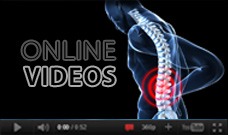Cervical Stenosis
Cervical stenosis refers to narrowing of the spinal canal. Cervical stenosis causes neck pain which can radiate to the arms and hands and may also be associated with numbness or weakness of the arms. This may lead to cervical radiculopathy and cervical myelopathy. Cervical radiculopathy occurs due to injury to the cervical spinal nerves, as they exit the spinal canal. Sometimes the excessive pressure over the spinal cord can result in spinal cord dysfunction; this condition is known as myelopathy. Myeloradiculopathy occurs when there is damage to the spinal cord as well as the nerve roots.
Based on the nature of compression, the cervical stenosis can be classified as:
- Foraminal spinal stenosis - involves compression of spinal nerves coming out through the neuroforamen, the natural pathway for the nerve
- Central canal stenosis - involves the compression of the spinal cord
Causes
Cervical stenosis is usually caused by age-related degenerative changes in the structure of the spinal canal; hence this condition is more common in people over the age of 50 years. The ageing process can cause bulging of the intervertebral discs, thickening of the soft tissues such as ligaments, and also destruction of cartilage covering the bones.
Symptoms
Cervical stenosis does not cause any symptoms unless there is compression of the spinal cord or spinal nerves. Hence a majority of patients may be asymptomatic. Some of the symptoms which may be associated with cervical stenosis include:
- Pain, stiffness, or numbness of the neck, shoulders, arms, hands, or occasionally legs
- Balance and coordination disturbances while walking or sitting
- Bowel or bladder dysfunction
Diagnosis
The diagnosis of cervical stenosis comprises of a physical examination along with a complete medical history of the patient. The doctor will examine the neck movement to evaluate for pain, numbness or weakness. Diagnostic imaging techniques such as X-rays, MRI scan, and CT scan help in confirming the diagnosis. Apart from the imaging studies, certain blood tests may also be conducted to rule out other disease conditions such as multiple sclerosis and vitamin B12 deficiency; which may mimic cervical stenosis.
Treatment
Mild to moderate cases of cervical stenosis, can be usually managed by non-surgical methods such as pain medicine, spinal injection, exercise that maintain strength and flexibility and physical therapy. In severe cases with progressive muscle weakness due to compression of the spinal cord or nerves, decompression surgery is recommended. This procedure relieves the symptoms by decompressing the pressure on the nerve roots and spinal cord. Some of the common surgical processes performed for the management of cervical stenosis include:
- Decompressive laminotomy: The lamina is removed to create more space
- Laminoplasty: Increase one side of the lamina to expand the size of the spinal canal
- Discectomy: Removal of a portion or the whole intervertebral disc
- Foraminotomy: Expands the neuroforamen to decompress the nerve roots
In a few surgical procedures screws and plates are employed to fuse the vertebrae with the bone graft. The bone graft aids in healing and better fusion.
|











